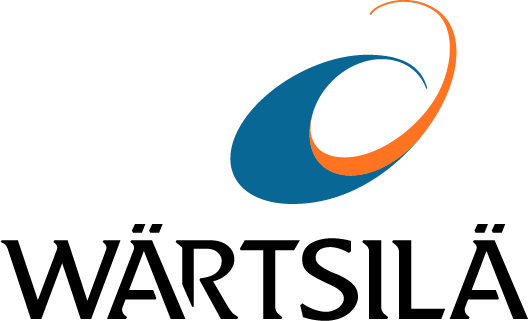

With rising energy costs and increasing demand for efficient heating solutions, the need for innovative approaches has never been greater. This article explores how investments in flexible gas engines are transforming district heating systems, making them more cost-effective and sustainable.
In recent years, the landscape of district heating has undergone a significant transformation. Once viewed primarily as cost centres, these systems are now being reimagined as potential profit generators. Recent industry research sheds light on how the combined heat and power (CHP) solutions that use flexible gas engines can unlock multiple revenue streams, revolutionising the financial outlook of district heating systems while supporting the broader energy transition.
Operational Benefits of Flexible Gas Engines
Internal combustion engines (ICE) are known for their fast start-up times, rapid ramping capabilities, and fuel efficiency in partial load conditions. These characteristics enable an unparalleled operational flexibility and significantly improve profitability. District heating market studies across key European markets highlight that for modern district heating companies, heat sales may constitute only a minor fraction of total revenue, while the combination of electricity market participation and grid services provides a robust financial foundation.
Market-Driven Flexibility
Flexible ICE combined heat and power (CHP) systems are uniquely positioned to respond to an increasing volatility in electricity markets. Their ability to hedge against downturns and capitalize on price peaks is crucial in today's dynamic market environment. Moreover, these engines represent a class of assets enabling district heating operators to capture multiple revenue streams while delivering affordable and secure heat for municipalities.
The introduction of flexible gas engines has opened up a variety of income sources:
- Electricity Market Participation: Operators can capitalize on both short-term price fluctuations and long-term contracts in the electricity market.
- Ancillary Services: By offering essential grid services such as automatic Frequency Restoration Reserve (aFRR), these systems can secure additional revenue.
- Capacity Market: With the increasing share of renewable energy in the grid, there's a growing need for balancing capacity. CHP plants can tap into this market by providing on-demand power when grid stability requires it.
As we delve deeper into the practical applications of these flexible gas engines, let's explore some real-world examples that highlight their impact on district heating systems and heat prices.
Real-World Examples
Several case studies across Europe illustrate the benefits of revenue stacking:
- Hungary: The privately owned company Alteo, which operates the FOTAV heating system in Budapest, combines gas cogeneration units with battery storage. This setup allows to use ICEs to provide aFRR services with a 30 sec start-up capability and participate in the frequency containment reserve market with batteries. Remarkably, these services have become more significant in the company's revenue structure than heat and electricity sales.
- Denmark: In Skagen, a municipal ICE CHP plant actively participates in the aFRR and electricity markets. The engines use natural gas and biomethane, when available, and account only for about 24% of the total heat produced, but the revenue they generate is disproportionately high. The rest of heat is produced by heat pumps and recovered from a wastewater treatment plant, a fish processing factory, and generated by electric boiler when electricity is cheap. This operational strategy enables the district heating company to pass on the extra profit to customers through lower heat tariffs.
- Estonia: The city of Narva, facing challenges with its existing carbon-intensive heat generation, opted for a diversified mix including biomass boilers, electric sources, and flexible gas cogeneration units. This setup allows for greater flexibility and profitability under various fuel and electricity price scenarios. Previously, Narva relied heavily on shale oil-fired CHP plants, which were the dominant sources of electricity and heat for the city. The transition to a more diverse energy mix represents a significant shift towards more sustainable and economically viable district heating operations in the city. At the same time, investment into the new flexible capacity is feasible and provides a short payback time thanks to the optimal combination of technologies that can minimize costs and maximize revenues.
The Future of District Heating
The transformation of district heating systems from cost centres to profit generators is not just a financial strategy; it's a key component of the broader energy transition. By leveraging flexible gas engine CHP systems, operators can:
- Enhance financial performance through diversified revenue streams
- Support grid stability in systems with high renewable energy penetration
- Provide a hedge against market volatility and fuel price fluctuations
Moreover, this approach aligns with the evolving energy landscape in Europe. For instance, Germany is developing an ambitious plan to implement 25 GW of installed capacity in hydrogen sources or units prepared for hydrogen fuelling, with half of this capacity planned for combined heat and power plants. This initiative is being developed in conjunction with a network of pipelines for hydrogen transport and a capacity market mechanism to support the development of hydrogen-ready capacities.
Conclusion
The concept of revenue stacking through flexible gas engine CHP systems represents a paradigm shift in district heating operations. By transforming these systems into dynamic revenue generators, operators can not only bolster their financial performance but also play a crucial role in supporting grid stability and accelerating the transition to a more sustainable energy mix. As the energy landscape continues to evolve, the ability to adapt and capitalize on multiple revenue streams will be key to the success and sustainability of district heating systems across Europe.
Did you like this? Subscribe to Insights updates!
Once every six weeks, you will get the top picks – the latest and the greatest pieces – from this Insights channel by email.
